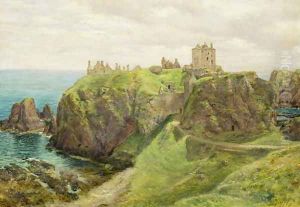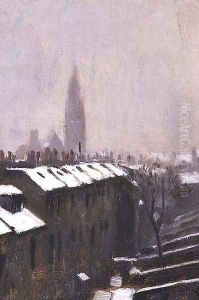Sir George Reid Paintings
Sir George Reid was a distinguished Scottish painter known for his portraits and landscapes. Born on July 31, 1841, in Aberdeen, Reid showed an early interest in art, which was supported by his family. He received his initial education at the Aberdeen Grammar School. His talent led him to pursue further studies at the Trustees’ Academy in Edinburgh under the guidance of Robert Scott Lauder, a prominent Scottish artist of the time.
During his formative years, Reid was influenced by the works of the Dutch Masters, which is evident in his use of light and shadow. He traveled extensively in Europe, particularly in Italy and Spain, where he studied the old masters and honed his skills. Reid's European tours were crucial in shaping his artistic style, which combined elements of traditional academic art with the emerging realist tendencies of the late 19th century.
Upon returning to Scotland, Reid quickly established himself as a leading portraitist. His portraits were known for their expressive realism and attention to detail, which earned him numerous commissions from notable figures in Scottish society. Aside from portraiture, Reid also painted historical subjects and landscapes. His landscapes, in particular, captured the unique atmosphere of the Scottish countryside with a delicate interplay of light and color.
Reid's contributions to Scottish art were recognized by his peers, and he held various prestigious positions throughout his career. He served as the President of the Royal Scottish Academy from 1891 until his death and was knighted in 1902 for his services to art. Sir George Reid passed away on December 9, 1913, leaving behind a legacy that significantly influenced Scottish painting. His works continue to be celebrated and are held in high regard in art collections both in Scotland and internationally.


